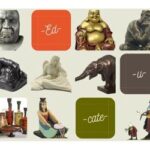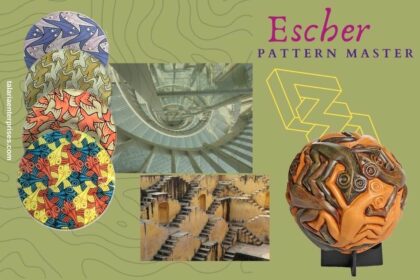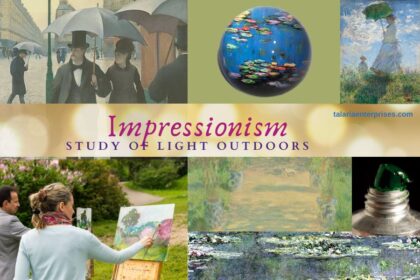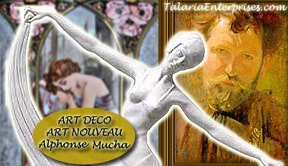
Art Nouveau is French for “New Art”. It was a multinational art movement in the period of 1880 to 1915 that reflected the need to transition from the traditional art into the modern industrial age. The spirit of the movement was to enhance the life of the people by incorporating artistic expressions into the daily objects. It was a “total style” which influenced fine arts, graphic arts, decorative arts, jewelry and furniture. Although connected to the 19th century and rococo, it sought to modernize it with stylized pattern, ornamentation, patterning and golden hues.
Alphonse Mucha (1860 – 1939) was a Czech artist whose advertising illustrations of beautiful women in ornamental frames established his legacy as the Master of Belle Epoque. Below we see an advertising poster with a young woman wearing an orange in a promotion image for Bitters, a digestive..

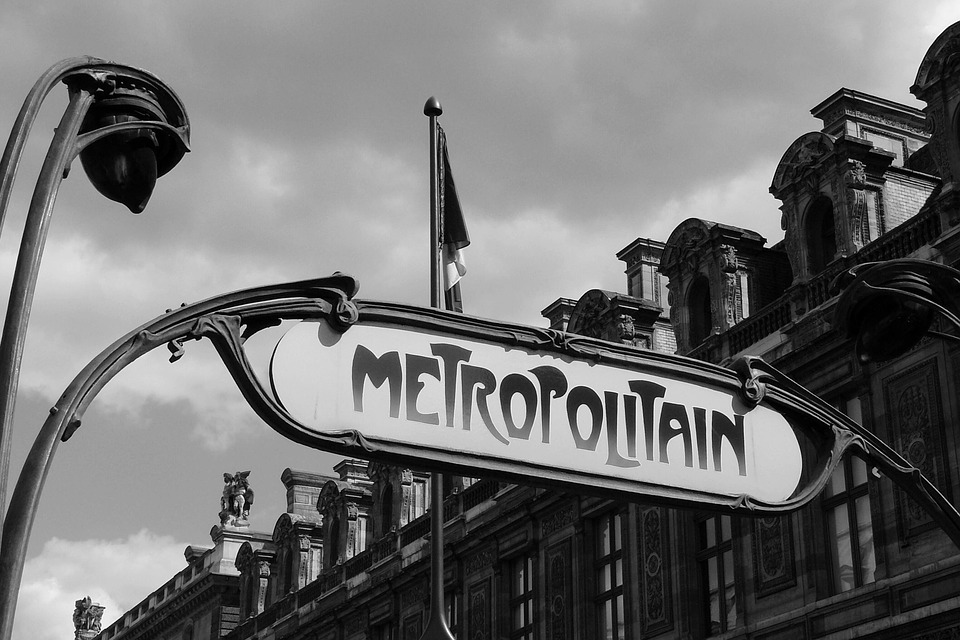


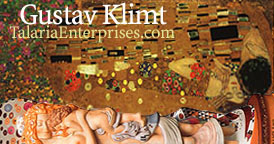
The Art Nouveau style was also being added to building architecture (see above). In Paris, the subway had a grand sign “Metropolitain” to mark the entry steps. Another example is a staircase with an organic tendril pattern in the metal handrail.
In Austria, Gustav Klimt was a prominent member of the Vienna Secession. Klimt’s contribution to the art world is a series of highly sensual, decorative portraits which have become synonymous with female beauty and romantic love. His most famous painting The Kiss (illustrated above) has a timeless quality of the passionate and monumental expression of human love. Notice the rich surface beauty the decorative patterning both in the gold flat background around the couple and the flower bed at their feet. Below, the painting Hope illustrates Klimt’s fascination with patterns in the cloak of the young woman which has circles suggesting flowers and three other women at her feet.
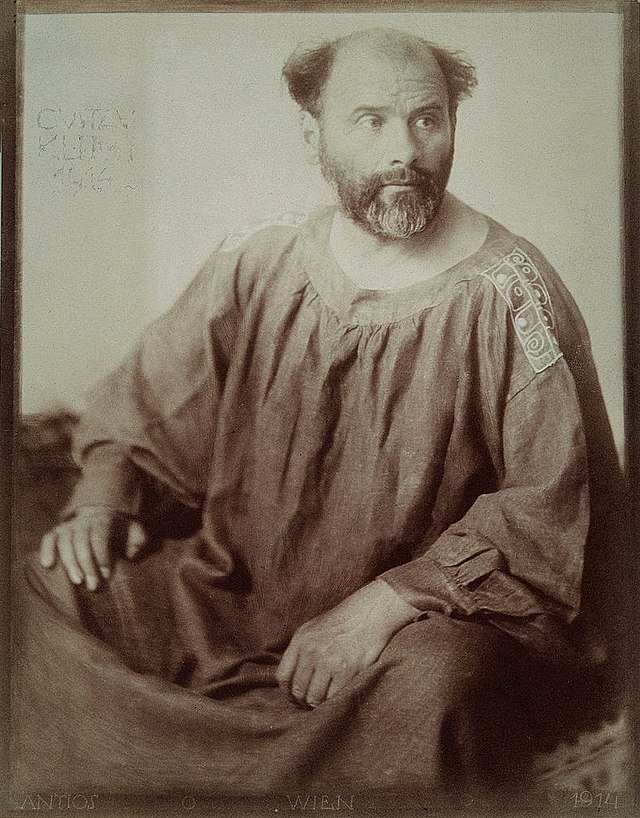
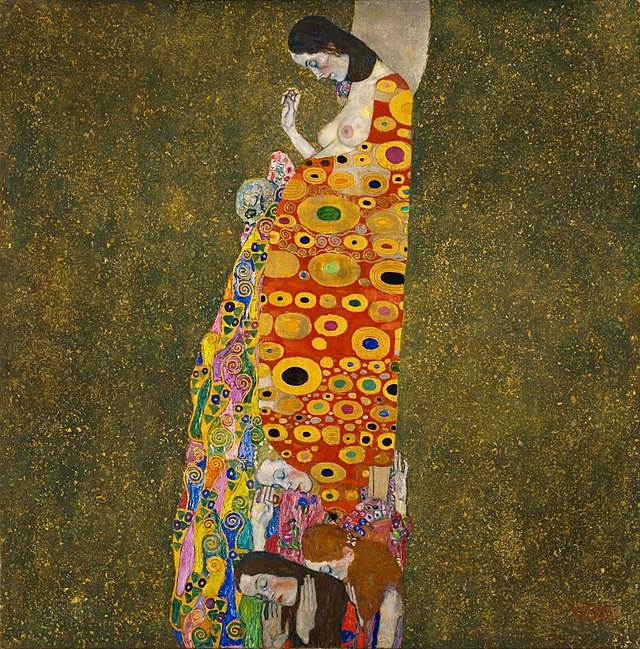
Theophile-Alexandre Steinlen (1859-1923), a French Illustrator, was highly sought after for his cafe posters such as Le Chat Noir. In 1881, Rudolphe Salis opened the Le Chat Noir Cabaret on the Boulevard Rochechouart (which later moved to the Rue de Laval). It soon became a legendary safe haven for the stage arts and Steinlen resided at its heart. He designed scenery, worked on the popular shadow plays, and in particular, he designed the famous poster which adorned Paris’ walls Poster for La Tournee du Chat Noir (Black Cat, 1896). The black and red cat (the colors of anarchy) became Montmartre’s symbol, the enclave and gathering site of artists.


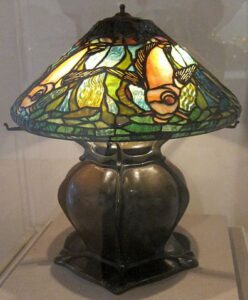
Another popular artist from the Art Nouveau period was Louis Comfort Tiffany (1848 – 1933) who designed stained glass lamps and vases with hand blown glass.
This lamp pictured at right illustrates his talents at incorporating nature into the lamp shade. We see fish swimming in the ocean through sea kelp. The organic interaction of the stained glass design is accentuated by the lamp base which also has rounded edges and natural accents.
Today Tiffany lamps sell for $100,000 and up depending on condition and rarity.
Table lamp by Louis Comfort Tiffany, c. 1905, bronze and stained glass, De Young Museum

Today affordable replicas are made of Klimt, Steinlen, and Tiffany’s artworks. These are small scale collectibles to remind you of seeing their art at museums.
